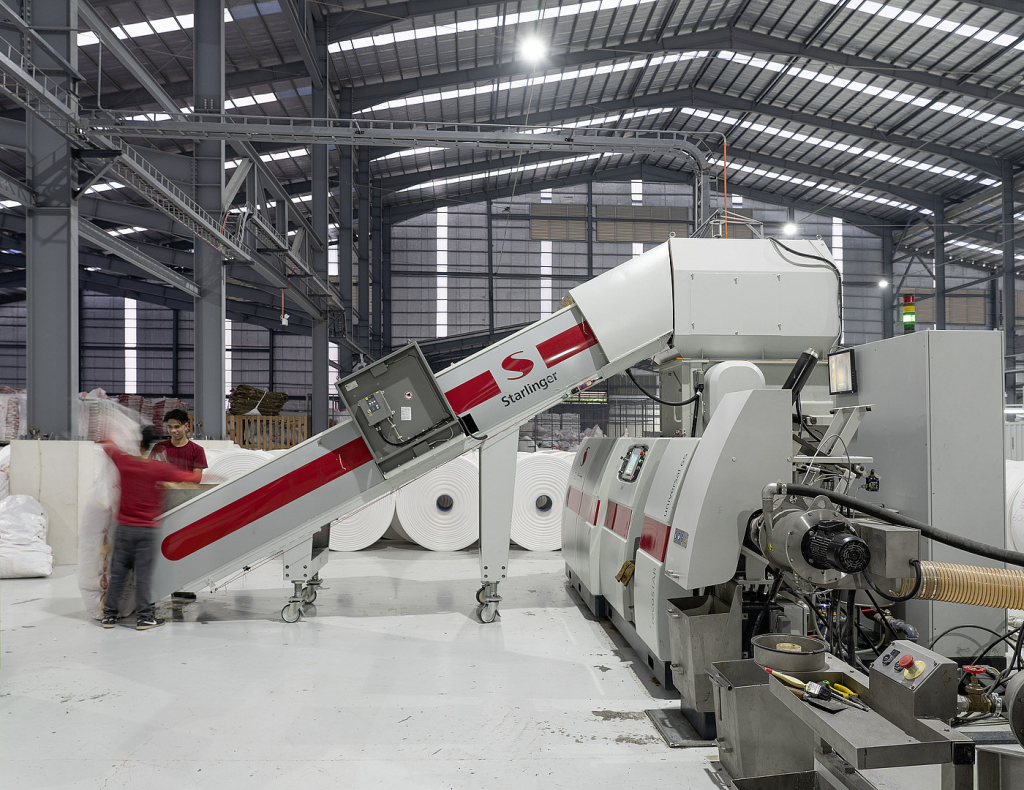
Introduction
In the global packaging industry, printed BOPP (biaxially oriented polypropylene) woven bags are emerging as a sustainable powerhouse, balancing ecological responsibility with cost efficiency. These bags, renowned for their durability, recyclability, and high-quality printability, now account for 22% of the flexible packaging market, driven by demand in agriculture, construction, and retail sectors. For manufacturers like VidePak, which integrates ESG (Environmental, Social, and Governance) principles into every production phase, the success of BOPP woven bags lies in their ability to reduce carbon footprints, enhance supply chain transparency, and deliver customizable branding solutions .
Ray, CEO of VidePak, remarks: “When a European fertilizer brand reduced packaging waste by 30% using our UV-printed BOPP bags, it wasn’t just about sustainability—it was proof that eco-friendly solutions can drive profitability and brand loyalty simultaneously.”
1. Understanding ESG Reporting and VidePak’s Commitments
ESG reporting evaluates a company’s adherence to environmental stewardship, social equity, and ethical governance. For VidePak, ESG compliance is not a checkbox but a strategic framework embedded in operations:
- Environmental: A 2MW solar power system offsets 1,200 tons of CO₂ annually, covering 40% of energy needs. Recycled PP materials achieve a 95% recyclability rate, aligning with the EU’s Circular Economy Action Plan .
- Social: Partnerships with NGOs fund education for 200+ children of low-income workers, reducing school dropout rates by 15% in rural China.
- Governance: 5S workplace management (Sort, Set, Shine, Standardize, Sustain) cuts workplace accidents by 30%, validated by ISO 45001 certification.
2. Environmental Benefits of BOPP Woven Bags
2.1 Reduced Plastic Pollution
Globally, 500 billion plastic bags are produced annually, with most ending in landfills or oceans, taking up to 1,000 years to decompose . BOPP woven bags, however, offer a viable alternative:
- Recyclability: Mono-material PP construction allows seamless recycling into new bags or non-woven textiles, diverting 500+ tons/year from landfills.
- Durability: Tensile strengths of 12–14 N/mm² (25% higher than industry averages) enable 5–7 reuse cycles, slashing single-use demand .
| Parameter | Traditional Plastic Bags | VidePak BOPP Bags |
|---|---|---|
| Decomposition Time | 100–1,000 years | 3–5 years (recycled) |
| Carbon Footprint | 1.5 kg CO₂/bag | 0.8 kg CO₂/bag |
| Recyclability Rate | <10% | 95% |
2.2 Energy Efficiency
VidePak’s Austrian Starlinger machinery reduces energy consumption by 20% through precision extrusion and lamination. Co-extrusion lines blend 30% post-consumer PP waste with virgin materials, cutting reliance on fossil fuels .
3. Economic Implications: Cost Savings and Market Growth
3.1 Supply Chain Efficiency
- Custom Printing: High-resolution CMYK/Pantone prints boost brand visibility, as seen in a U.S. pet food company’s 25% sales increase after adopting VidePak’s block-bottom BOPP bags.
- Automation Compatibility: Valve designs enable filling speeds of 1,200 bags/hour, reducing labor costs by 40% in chemical logistics .
3.2 Market Expansion
The global BOPP packaging market is projected to grow at a CAGR of 6.5% from 2025 to 2030, driven by e-commerce and regulatory bans on single-use plastics. VidePak’s $80 million annual revenue reflects its dominance in Asia and Europe, with 30% of exports serving EU clients compliant with REACH standards .
4. Case Study: ESG-Driven Success in Agriculture
A Brazilian coffee exporter reduced spillage losses by $150,000/year using VidePak’s PE-coated BOPP bags with QR-code tracking. The bags’ moisture-resistant layers extended bean shelf life by 20%, while ESG-aligned production secured partnerships with Fair Trade-certified brands.
5. FAQs: Addressing Key Industry Concerns
Q1: How do BOPP bags compare to paper bags in cost efficiency?
A: While BOPP bags have 15% higher upfront costs, their reusability reduces long-term expenses by 40% compared to single-use paper alternatives .
Q2: Are BOPP bags suitable for food-grade applications?
A: Yes. FDA-approved PE liners and ISO 22000 processes ensure safety for grains, coffee, and pharmaceuticals.
Q3: Can small businesses afford custom-printed orders?
A: VidePak’s 30+ printing machines support orders from 1,000 units, with Pantone color matching and biodegradable ink options.
6. Future Trends: Innovation and Policy Alignment
- Smart Packaging: Blockchain-enabled traceability and IoT moisture sensors will dominate by 2030, demanded by 75% of Fortune 500 firms.
- Bio-Based PP: Algae-derived resins aim to replace 50% of virgin PP, reducing carbon footprints by 40% .
External Resources
- Explore how BOPP laminations enhance branding: BOPP Laminated Woven Bags
- Learn about compliance with ESG standards: PP Bags Meeting Regulatory Standards
By harmonizing material innovation with ESG accountability, BOPP woven bags exemplify how industries can reconcile profitability with planetary stewardship. As global regulations tighten, solutions like these will remain pivotal in shaping a circular economy.